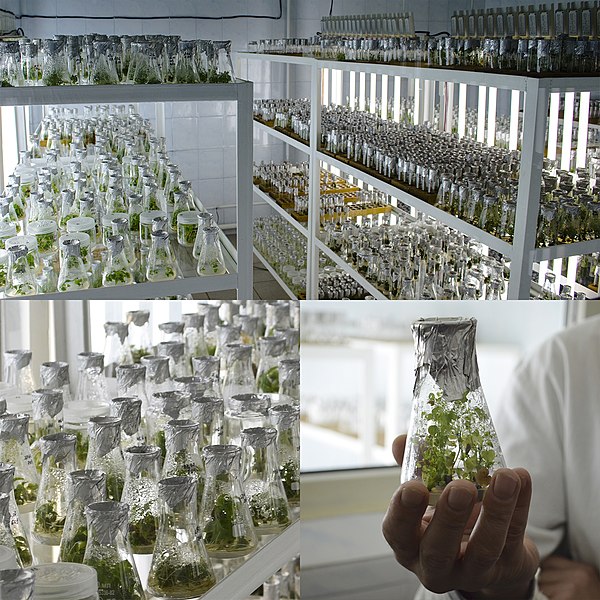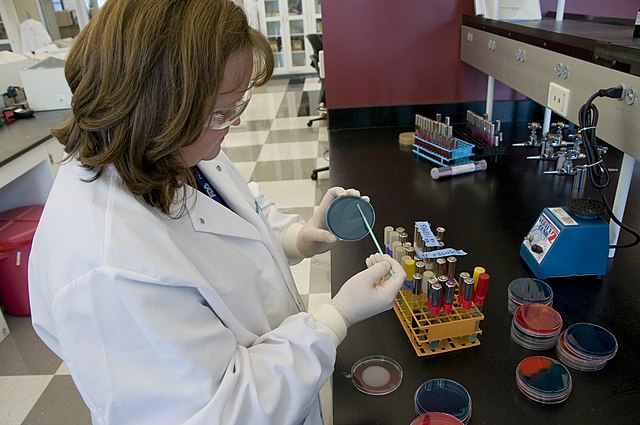In vitro studies are performed with microorganisms, cells, or biological molecules outside their normal biological context. Colloquially called "test-tube experiments", these studies in biology and its subdisciplines are traditionally done in labware such as test tubes, flasks, Petri dishes, and microtiter plates. Studies conducted using components of an organism that have been isolated from their usual biological surroundings permit a more detailed or more convenient analysis than can be done with whole organisms; however, results obtained from in vitro experiments may not fully or accurately predict the effects on a whole organism. In contrast to in vitro experiments, in vivo studies are those conducted in living organisms, including humans, known as clinical trials, and whole plants.
Cloned plants in vitro
Top view of a Vitrocell mammalian exposure module "smoking robot", (lid removed) view of four separated wells for cell culture inserts to be exposed to tobacco smoke or an aerosol for an in vitro study of the effects
A growth medium or culture medium is a solid, liquid, or semi-solid designed to support the growth of a population of microorganisms or cells via the process of cell proliferation or small plants like the moss Physcomitrella patens. Different types of media are used for growing different types of cells.
An agar plate – an example of a bacterial growth medium*: Specifically, it is a streak plate; the orange lines and dots are formed by bacterial colonies.
US Food and Drug Administration scientist tests for Salmonella
A culture of salmonella bacteria
Physcomitrella patens plants growing axenically on agar plates (Petri dish, 9 cm diameter)






